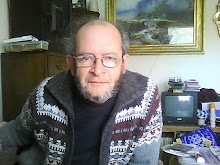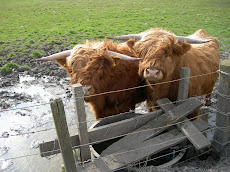Robert Burns remains Scotland's pre-eminent poet and, on January 25, millions of people around the world will celebrate Burns Night to mark the anniversary of his birth.
Burns Night has been celebrated for over two centuries. But why, you may ask, has the history of Burns Night endured so widely, and for so long?
One answer is, of course, his writing.
John Steinbeck took the title of his 1937 novel, Of Mice and Men, from a Burns Poem.
And folk legend Bob Dylan highlighted Burns' 1794 song, A Red Red Rose, as the lyric that had the biggest effect on his life.
Even in Russia, Burns was elected the 'people's poet' and a 1924 translation of his works sold over 600,000 copies. His poetry continues to be taught in Russian schools.
For another answer, look no further than New Year's Eve.
"And we'll tak a cup o' kindness yet, for auld lang syne..." - from Auld Lang Syne by Robert Burns
Burns is most commonly known as the author of Auld Lange Syne, the song used to greet the New Year by English speakers across the globe.
The song is a true anthem, containing a universal truth: the past is forever gone, but should never be forgotten.
Auld Lang Syne's underlying theme, of making the harsh realities of life more palatable through the company of good friends and good drink, is quintessentially Scottish.
And it would have been this theme that a select group of Burns' friends had in mind when they celebrated the very first Burns Supper in 1801, five years after his death.
Celebrating their friend's passing in such as way was noble and poignant, particularly when considering his tragic and awful demise.
"An illness which has long hung about me... will speedily send me beyond that bourne whence no traveller returns... Farewell!!" - a letter written by Burns in his final days
Burns' death is understood to have been caused by a chronic heart complaint.
Unfortunately, his end was worsened by 19th century misdiagnosis.
Mistaking his condition for gout, Burns' person physician advised his patient to travel to Brow Well, a mineral spring near Dumfries in Scotland.
There, the treatments - including drinking and bathing in the foul-tasting cold spring waters - only worsened Burns' condition.
As his health deteriorated, he began to age prematurely and would fall into fits of despondency, with only his battered Bible for comfort.
Four days after leaving Brow Well, Burns died aged just 37.
"Fair fa' your honest, sonsie face, Great chieftain o' the puddin-race!" - a line from Burns' Ode to Haggis
In its early years, Burns Night was held on the date of the poet's death: July 21, 1796.
However, as Robert Burns became a recognised Scottish institution, and Burns Night evolved into a nation's pastime, the celebration was moved to his birthday: January 25, 1759.
Burns Night itself, and the Burns Supper, includes various established traditions.
These included the eating of haggis - originally Burns' friends' tribute to his famous Ode to Haggis - along with neeps and tatties, to compliment the haggis' spiciness.
Traditionally, the Burns Supper is held with everyone sat around a table. After a few words welcoming everyone are spoken, grace is usually said - normally, the Selkirk Grace.
"Some hae meat and canna eat, And some wad eat that want it; But we hae meat, and we can eat, Sae let the Lord be thankit...." - from the Selkirk Grace
The Selkirk Grace, so-called because Burns was said to have delivered it at a dinner given by the Earl of Selkirk, precedes a soup course.
Later, when the tables are cleared after the meal, the host proposes The Loyal Toast, often honouring the Head of State (for example, The Queen in the UK).
Then comes the Immortal Memory, a short, lively speech about Robert Burns himself. Featuring tributes to Burns' life and works, it ends with a toast to his immortal memory.
Aside from the enduring popularity of Burns night, various memorabilia recent sales, both at auction and on the private market, have demonstrated that Burns' legacy is also immortal.
Last year, having been unseen in public since 1896, one of the most important pieces of Burns memorabilia appeared on the private market.
The famous Burns' Bible, clutched by the poet at Brow Well as his main comfort during his final days, was recently sold by Paul Fraser Collectibles for £25,000 ($41,250).
And, earlier in 2009, a retired professor became the new patron of Burns' best known creation: the origional Auld Lang Syne manuscript itself.
The manuscript "sold" at auction for £10,000 to Professor David Purdie. Purdie will remain Auld Lang Syne's custodian while it is held in the Robert Burns Birthplace Museum in Ayrshire, Scotland.
Elsewhere in the collectors' markets, the renowned Macallan distillery released a new whisky marking the 250th anniversary of Burns' birth.
Limited to just 250 bottles - from two casks chosen by The Macallan's whisky maker Bob Dalgarno, one from 1997 and one from 1998 - each was numbered 1759, the date of Burns' birth.
The whisky is rare: a sherry oak expression with an ABV of 46%, according to Whisky Intelligence. It is sold in a specially-designed decanter.
In England, Burns has been honoured on postage stamps three times, and is now portrayed on the reverse side of the £5 coin.
While, in his homeland of Scotland, he is pictured on the £5 note of the Clydesdale Bank.
And, in addition to these memorabilia, there remains Burns Night: still celebrated each year by native Scotsmen and expats all over the world.
For as long as Burns' literary legacy and his message - to remember our common humanity - live on, the celebrations of his life and works will continue.
Paul Fraser has been involved in high-end collectibles for over 35 years, selling more than $300m of rare items, including John Lennon's childhood stamp album to the Smithsonian. Paul Fraser Collectibles offers a free high-end collectibles newsletter service with expert opinion and advice.
Paul Fraser Collectibles
Article Source: http://EzineArticles.com/?expert=Paul_Ian_Fraser
Thursday, 20 May 2010
Subscribe to:
Post Comments (Atom)











No comments:
Post a Comment